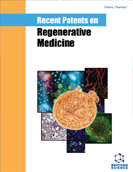Abstract
One of the most exciting concepts in cancer research today is the cancer stem cell model where tumors are organized, as any other tissue, in a cellular hierarchy where the cancer stem cell sits at the apex, defined by its capacity to self-renew, the potential to differentiate into all cells of the tumor and the ability to proliferate and drive the expansion of the tumor. Besides, tumor expansion and metastasis is intimately linked to the generation of cells with stem cell features through the process of epithelial to mesenchynal transition (EMT). Understanding the mechanisms that regulate selfrenewal, mobilization and poliferation of cancer stem cells could lead to more effective treatments. Current efforts in drug discovery are directed towards interfering with the mechanisms that regulate self-renewal of stem cells, mainly the Wnt, Hh and Notch pathways, thus recently awarded patents and applications deal with these topics. There is however a strong need for marker identification and novel functional assays developed to test precisely those inhibitors in the stem cell population of tumors and so is reflected in that roughly one third of the patents targeted to breast cancer stem cells protect the use, identification and isolation of cancer stem cells. Finally, we discuss the recent observation that links the tumor suppressor p53 and induced pluripotency reprogramming which has lead to the speculation that cancer stem cells may arise through an altered reprogramming-like mechanism. Indeed some or all of the pluritpotency-associated genes are overexpressed in several forms of cancer, including breast cancer.
Keywords: Breast cancer, cancer stem cells, EMT, Notch, pluripotency, Shh, Wnt, metastasis, poliferation, Notch pathways, suppressor p53, altered reprogramming-like mechanism, pluritpotency-associated genes, xenotransplantation, progenitor cell, carcinogenesis, chemotherapy, radiotherapy, cyclophosphamide, docetaxel, Aldehyde dehydrogenease 1, paclitaxel, hematopoietic system, intrinsic resistance, flow cytometry, genotoxic resistance, oxidative free radicals, growth factor receptor genes, Coumermycin, prostate cancer, trastuzumab treatment, Aldefluor-positive mammary epithelial cells, T cell factor, limphoid enhancer factor, adenomatous polyposis coli (APC), threonine kinases casein complex I (CKI), catenin inhibitors, non-steroid anti-inflammatory drugs (NSAID), hedgehog (Hh) signaling pathways, embryogenesis, B-Lymphoma Moloney murine leukaemia virus, polycomb group (PcG), chromatin-modifying complexes, basal cell carcinoma (BCC), secretase, secretase inhibitors (GSI), Alzheimer's disease, E-Cadherin expression, stemness, micrometastasis, macrometastasis, TGF-paradox, mesoderm, tumor biopsies, E-Cadherin, pluripotent stem cells capable, teratomas, teratocarcinomas, RECIST, complete response (CR), animal-based genetic screens, regenerative medicine
 125
125







